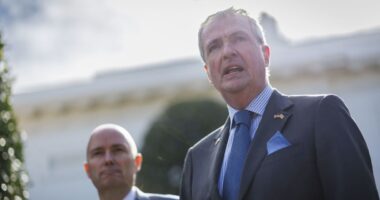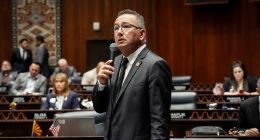
WASHINGTON—The Biden administration will begin distributing $350 billion to state and local governments this month, giving them money to pay for pandemic-related costs, fill revenue shortfalls and pay for water, sewer and broadband projects—but not to cut state taxes.
Money could start flowing to states, local and tribal governments within days, senior administration officials said Monday.
“These governments have endured unprecedented strains, forcing many to make untenable choices,” said Deputy Treasury Secretary Wally Adeyemo.
The Treasury Department is also releasing rules that spell out how state and local governments can use the money—and how they can’t. The most controversial piece is a prohibition on using the money to pay for state tax cuts.
Republican-led states argued that the condition was vague and unconstitutional, and several have filed lawsuits. Administration officials said they were trying to implement Congress’s intent to prevent indirect federal funding of state tax cuts.
Administration officials said Monday that states that cut taxes must show that they used other funding sources—not the new federal aid—to finance those tax cuts. Otherwise, they have to give back the federal money. Under the law and the new Treasury rules, governments receiving the money also can’t use the money for debt service, pension contributions or rainy-day funds.
Disagreements among lawmakers over how much assistance state and local governments needed stalled passage of Covid-19 relief bills for much of the second half of 2020. When Democrats took full control of the House, Senate and White House in early 2021, they moved quickly to incorporate state and local aid into the relief law that President Biden signed in March.
That law provided $195 billion to states to help them cope with increased costs and revenue shortfalls from the pandemic, plus money for local governments, tribal governments and territories. Administration officials said they hoped the money could help the job market recover by spurring public-sector hiring.
“We all know that one of the things that held back the recovery the most after the Great Recession was the contraction and state and local government,” said Gene Sperling, who is helping coordinate the implementation at the White House. “This is responding to the lessons of the past in a powerful way.”
The money can go toward pandemic-related costs such as vaccination programs, building ventilation, aid to small businesses and assistance to unemployed workers. Governments will also be allowed to use the money to address housing, education and health disparities.
The most flexible piece for each government would let states make up revenue shortfalls that they suffered as a result of the pandemic-induced economic downturn. The Treasury Department said states can calculate the shortfall by comparing it to the pre-pandemic trend. Administration officials didn’t have an estimate on how much of the $350 billion would fit into that category.
Write to Richard Rubin at [email protected]
Copyright ©2020 Dow Jones & Company, Inc. All Rights Reserved. 87990cbe856818d5eddac44c7b1cdeb8
This post first appeared on wsj.com








